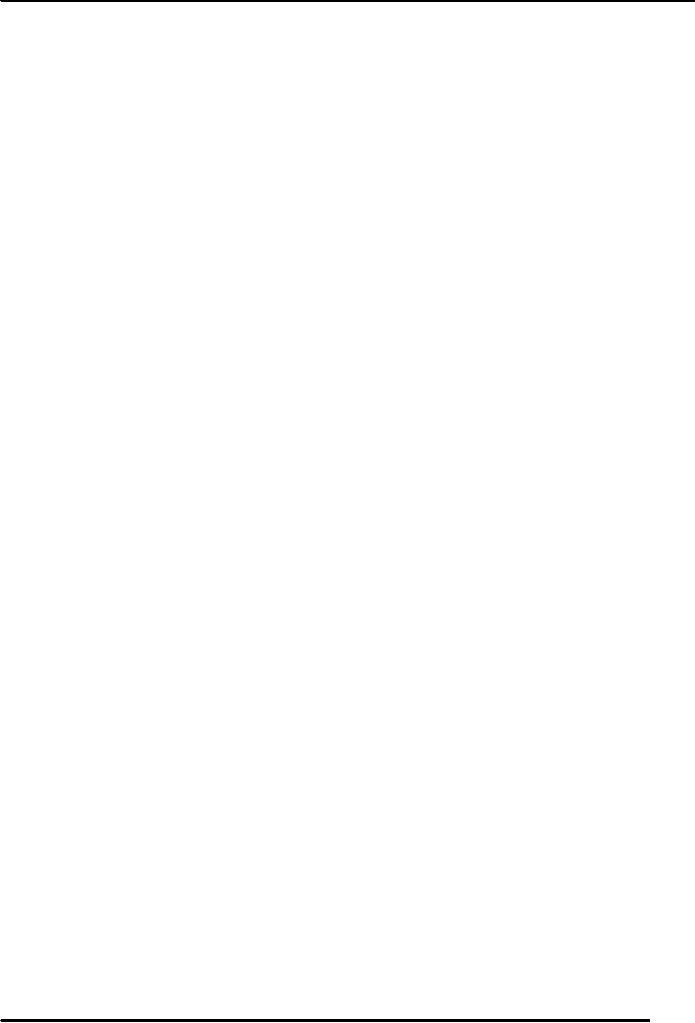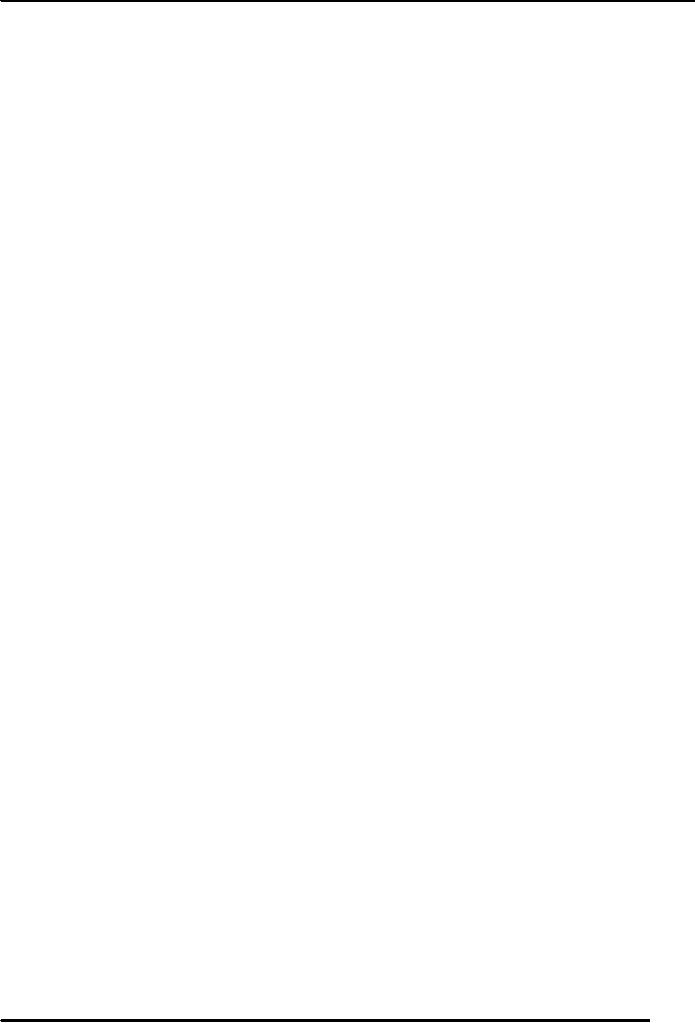 |

Human
Relations MGMT611
VU
Lesson
27
SIGNIFICANCE
OF RESUME
What
is a Resume?
Resume
is the first meeting between an
employee and a prospective employer.
Resumes introduce the
applicant
with the prospective employer. It is the document
which encloses the educational
qualification,
relevant
work experience, and
personal detail of a person submitted to an employer
or some other
authority
for
securing a job. Writing a
good quality resume is
necessary for getting a better job. There
are no hard and
fast
rules of writing a resume.
The purpose of the resume is to
get to know the applicant. The
employers
assess
the applicants through resumes
first and then they might
call the short listed applicants
for interview.
Therefore
the resume should be written in an effective
manner so that the prospective employer
could have
the
first good impression of the applicant.
Resume is a French word. It is
also called curriculum
vitae.
Forms
of contact
Resume
is a form of communication. Communication helps
build relationships. As we
know,
communication
is defined as any act by
which one person gives to or
receives from another
person,
information
about that person's needs,
desires, perceptions, and knowledge.
So, the objective of a resume is
to
let others know about you. We
can communicate in a number of ways,
which are as follows:
Written
Spoken
CV
(curriculum vitae)
Letter
Good
relationships emerge due to proper
communication. If we are capable of communicating
our message
in
an effective manner, then possibly we
can convince the prospective employer to
call us for the
interview.
Our
resume may probably be the
first point of contact. It is
said first impression is the
lasting impression.
Therefore,
the resume should be precise, concise
and effective.
Major
types of resumes
It
must be kept in mind that
the major purpose of a r�sum� is to help
you obtain a job interview,
not a job.
A
challenge in preparing an effective r�sum� is to suit
many different preferences,
such as length and
amount
of detail about job experience.
Writing
a resume is an art. It is written in
various types and forms.
Some of its popular forms
are:
The
chronological
r�sum� presents
facts in reverse chronological order.
Start from present job
or
position
and move date wise
backward. This type of resume is mostly
popular in our country.
In
this
type of resume the problem is sometimes
with the filling up the gaps.
When a year or two do
not
show what you have been
doing does not leave a
good impression on the
prospective
employer.
These gaps should be filled
sensibly telling what you have
been doing, e.g. you
were
busy
with your father's business,
or you were on foreign tour
etc.
The
functional
r�sum� organizes
skills and accomplishments
into the function performed. If
you
have
worked in any organization, the skill
and expertise you have
learnt is mentioned. For example
you
can tell that you
have team making skills or
you can organize
events.
The
targeted
r�sum� focuses
on a specific job target and
only presents information relevant
to
that
target. Whichever r�sum�
format you choose, it is
best to place your most
saleable asset first.
What
is needed and what you have
to offer, should be mentioned first.
Focus on yourself and
find
those
events in your life that
depict your capabilities and
skills needed for that
particular job. If
there
is a match between your
skills and the requirements of the
employer it can be helpful to get
a
job
interview. Microsoft Word
contains r�sum� formats worthy of
consideration.
The
creative
resume presents
skills in a creative form. A
creative-style
r�sum�
is one with a novel
format
and design. Resume should be
creative not created (not
the one that creates false
facts). It
is
best suited for jobs
with a specific emphasis on
creativity. The generally
accepted approach is to
be
creative when submitting r�sum�s.
Job seekers should be aware
that many employers
verify
facts
presented on a r�sum�.
The
gimmickry
resume is
also to get the attention of the
prospective employer. When
your
background
does not fit the position,
emphasize skills and
experiences that would
contribute to
83

Human
Relations MGMT611
VU
success
in the job under consideration. When you
do not have the experience or
skill directly
required
for the particular job, you
can mention your skills
that are relevant for that
specific job.
These
are various forms of resume,
which differ from each
other according to the objectives of the
resume.
Since
organizational structures are changing,
job requirements are also
changing. Employers look
for
specific
skills from the employees,
according to the nature of the job,
e.g. computer know how
is
considered
a must for a desk job
these days. A good resume
should include all the skills and
qualifications
that
you can offer and the
prospective employers are
interested in. Resumes must
include what is needed in
today's
work environment or what are the
requirements of the organization. Resume
styles are changing
with
the changing environment and
needs of the organizations. In today's
world emphasis is given on the
knowledge
of information technology, values,
ethics, and skills, having the
characteristics of a team
player
and
also knowing a foreign
language.
Introduction
to Resume
The
employer might be asked as to the type of
references
required, or
for recent graduates,
references
might
be left on file in the placement
office. Personal references
are given so that the prospective
employer
could
get information about you.
References of only those people should be
given who know you
personally.
The new job seekers
can mention the names along
with their positions, and titles of the
teachers,
supervisors
or head of the departments as
referees.
A
new emphasis in r�sum� construction is to
incorporate your
values into
the presentation of yourself
because
of the intensified interest in ethics in
business. Show you are an
effective worker. The
personal
interest
section can help demonstrate
your values because people
engage in activities they think
are
important.
How
to Handle the Job Objective
Section
The
job
objective section should be
divided into short--and
long-range objectives. The objective
section
often
has to be tailored to the specific
job under consideration. A young applicant with
less or no
experience
for the specific job can
mention tactfully his/her
future plans of what he/she
wants to be. For
example
you can say, "I like to
excel in information technology";
etc. Goals should be
realistic.
Electronic
Submission of the R�sum�
Not
every prospective employer can or is
willing to accept compressed
files. The easiest approach
is to
submit
your r�sum� as a Microsoft
Word document or plain text
file.
Yet,
some companies will not open
attached files because of concerns
about computer viruses. As a
last
resort,
copy your r�sum� directly
into the e-mail
document.
References:
Dubrin,
A.J. (2005). Human Relations
for Career and Personal
Success. Upper Saddle River,
New Jersey,
07458.
84
Table of Contents:
- HUMAN RELATIONS:Some Guidelines for Effective Human Relations, Communication has 3meanings
- CULTURE AND PERSONALITY:Definition of sub culture, Definition of Personality, Types of Persons
- PERSONALITY AND STRESS:Personality, PERSONAL TOOLS TO CONTROL STRESS
- PERCEPTION AND INDIVIDUAL BEHAVIOUR:Three concepts of personality, Bias in Perception
- PERCEPTION AND GROUP BEHAVIOR:Characteristics of Groups, Individual and Group Behavior
- ATTITUDE AND BEHAVIOUR:Types of Attitudes, Steps to turn attitude into action
- PERSONAL MOTIVATION AND ACHIEVEMENT:Needs and Motivation, Self-discipline and motivation
- SOLVING PROBLEMS SKILLFULLY:Problem solving and cognition, Ways to solve problems
- CREATIVITY IN PROBLEM SOLVING:Barriers to creativity, Tips to solve problems creatively
- HANDLING PERSONAL ISSUES:Self-Defeating Behaviour, Positive attitude to tackle personal problems
- CONFLICT RESOLUTION:WHY SO MUCH CONFLICT EXISTS, TECHNIQUES FOR RESOLVING CONFLICTS
- COMMUNICATION AND HUMAN RELATIONS:Process of communication, Improving gender barriers to communication
- ORGANIZATIONAL COMMUNICATION:To improve listening skills, Types of organizational communication
- UNDERSTANDING COMMUNICATION STYLES:Modeling communication style, Sociability continuum
- SELF-ESTEEM:Building process of self-esteem, Self-esteem and public image
- BUILDING SELF-CONFIDENCE:The importance of self-confidence and self-efficacy, Balanced Self-Confidence:
- BECOMING A LEADER-1:Assessing leadership role, Traits and Characteristics of Effective Leaders
- BECOMING A LEADER-II:Theories of leadership, Developing leadership potential
- GLOBALIZATION AND CROSS-CULTURAL DIFFERENCES:Religious Values and Bicultural Identities
- IMPROVING CROSS-CULTURAL COMPETENCE:Strategies to improve cross-cultural relations, More steps to improve Cultural Relations
- BUILDING GOOD RELATIONS WITH MANAGERS:Impressing your manager, Coping with a problem manager
- BUILDING GOOD RELATIONS WITH CO-WORKERS:Make Co-workers feel important, Maintain Honest and Open Relationships
- BUILDING GOOD RELATIONS WITH CUSTOMERS:Salesperson Represents the Business, Approaching the Customer, Excuses vs. Objections
- CHOOSING A CAREER-1:Ten Myths about Choosing a Career, Attitude toward and Perceptions about Myself
- CHOOSING A CAREER-II:Choosing a career and developing a portfolio Career, Suggestions for career Preparation
- FINDING A JOB:Targeting your job search, The Internet and Résumé Database Services, Extreme Job Hunting
- SIGNIFICANCE OF RESUME:Major types of resumes, Electronic Submission of the Résumé
- IMPROVING INTERVIEW SKILLS:Successful interview, Knowing the employer or Organization
- IMPROVING WORK HABITS-1:Reasons of procrastination, Techniques for Reducing Procrastination
- IMPROVING WORK HABITS-2:Developing the proper attitudes and values, Time-management techniques
- NEW MODEL OF CAREER ADVANCEMENT:Career portability, HUMAN RELATIONS SELF-ASSESSMENT
- TAKING CONTROL OF YOURSELF:Develop Outstanding Interpersonal Skills, Business etiquettes
- EXERTING CONTROL ON OUTSIDE ENVIRONMENT:Important communication tip, Exerting control over the outside world
- MANAGING PERSONAL FINANCES-1:Your personal financial plan, Steps in budget making
- MANAGING PERSONAL FINANCES-2:Basic investment principles, Tolerance for Investment Risks, Types of investments
- ACHIEVING HAPPINESS-1:Finding happiness and enhancing your personal life, The key to happiness
- ACHIEVING HAPPINESS-2:The Five Principles of Psychological Functioning, Your mind and Happiness
- ACHIEVING HAPPINESS-3:Need for intimacy, Working out issues with relationships
- APATHY AND ITS REMEDIES:Let us try to understand the various definitions of apathy, Coping strategies for apathy
- ENHANCING PERSONAL ETHICS-1:Influence of Culture, Common ethical problems
- ENHANCING PERSONAL ETHICS-2:Common ethical problems, Guidelines for Behaving Ethically
- HELPING OTHERS GROW:Being a Nurturing, Positive Person, A list of mentoring behaviour, Coaching skills and techniques
- REVIEW-I:What is a Human Relation?, Meanings of Communication, Two types of stress, Some personal problem, Communication style
- REVIEW-II:Steps to build self-confidence, Globalization, Building Good Relations with Co-workers, Good work habits
- REVIEW-III:New model of career advancement, Choosing your investment, Tactics for Dealing with Difficult People